Do-it-yourself sundial: decorate the dacha and kindergarten playground
Everyone who lives in a private house strives to decorate their garden in accordance with the latest design innovations and fashion trends. Often, landscape design is based on a natural structure - a sundial. You will be surprised, but you can accurately determine the time using them. Today we will make a sundial with our own hands.
Sun as a gift
Time passed, we learned how to make wristwatches, and the need to trust the sun disappeared. But today the sundial has burst into the expanses of our garden plots. Why not a designer decoration?
First, let's find out what types of sundials exist in nature. There are three in total:
- horizontal;
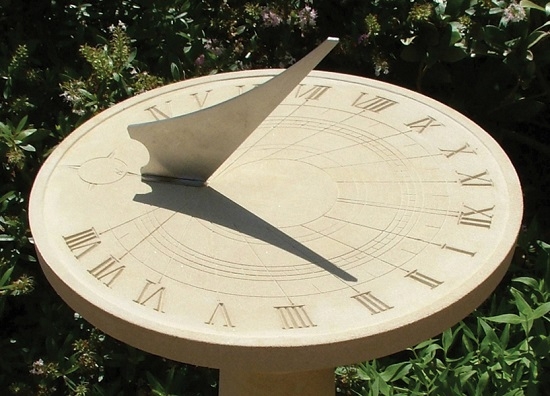
- equatorial;

- vertical.
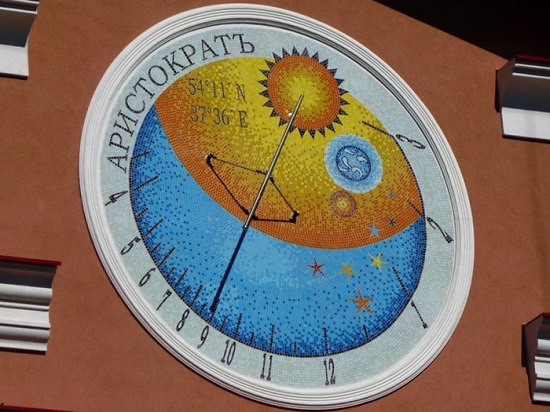
You can make such watches from any material, even cardboard. In general, any waste material will be useful to you.
Please note that the design of a sundial is different from a conventional timekeeping device. Be sure to make the following elements:
- dial plate;
- gnomon;
- pointer;
- center of frames.

A sundial at the dacha with your own hands can be made in the form of a fountain or figurine. Basically, you can make anything. It all depends on the breadth of your imagination and skills.
Be sure to place the clock in a sunny place where there is no shadow. The shadow will be cast by the gnomon. A shadow line will appear on the dial, which will act as an arrow. Of course, at night you won't be able to see what time it is. But during the day, while walking or having a great time in the garden, you can always control the passage of minutes and hours.
Read also:
A do-it-yourself vertical sundial is the simplest way to build an original decoration for a garden or alley. This clock should be placed on a wall, fence or pole. They can be made of wood, plastic, metal, cardboard.
Following the sun
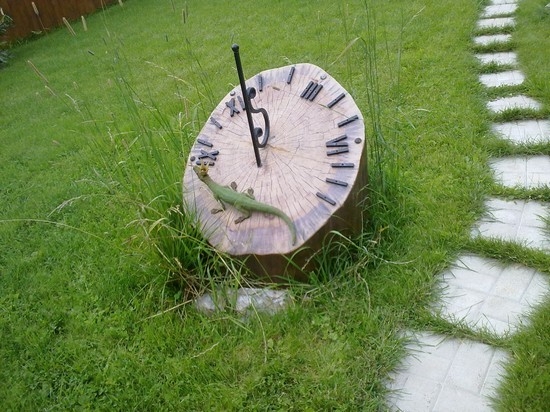
To make not just a decorative element, but a truly working clock, you need to know some features:
- We will determine the angle of inclination using the formula: 90° - the angle of your latitude;
- the gnomon must be long to cast a shadow;
- every hour is approximately 15°;
- clock construction is best done on the longest day of the year;
- You can decorate a sundial with stones, beads, tiles, driftwood, bricks, glass, and forged elements.
A little advice: before modeling a complex structure - a sundial, practice on pocket versions. For this it is better to use plywood or cardboard. And only after honing your skills, begin to create a real miracle of nature.
It is often in preschool institutions that you can find sundials. Such an element will not only decorate the territory of the kindergarten, but will also help children fully develop and expand their horizons.
And if you also involve your offspring in the creative process, then it will be simply wonderful. They will be able to learn how to do calculations, of course, under your strict guidance, and will also show their imagination. Entrust the decor to your children. The result is an unusual and very beautiful design.
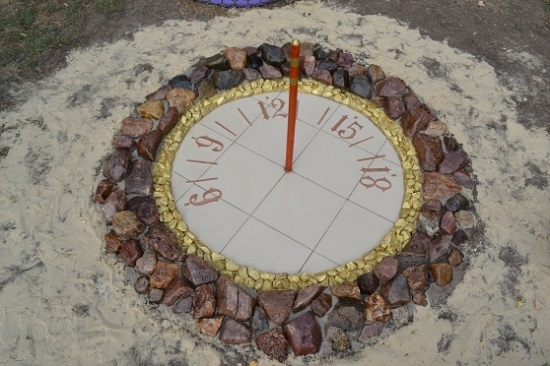
Necessary materials:
- crushed stone;
- durable glue;
- sand;
- cement;
- gnomon;
- tile;
- stones;
- varnish, paint;
- linoleum for cutting out numbers.
Step-by-step description of the creative process:
- We will be constructing a horizontal clock, so no calculations are needed.
- To begin with, let’s involve representatives of the stronger half of humanity in complex work. We need to dig a pit that is not too deep.
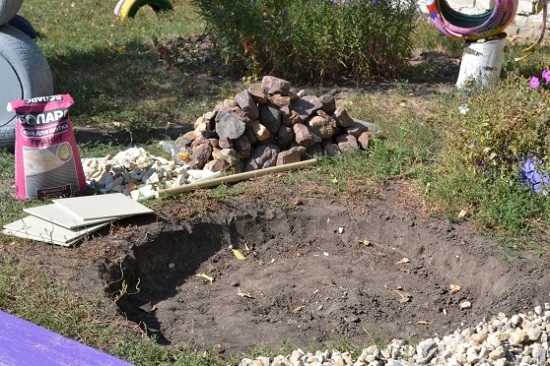
- Fill the hole with sand, trying to level its surface as much as possible.
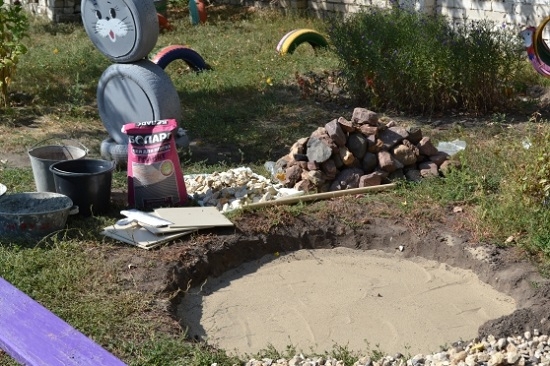
- Now let's take a tape measure and measure the diameter of our circle.
- A holder for a shovel, rake or hoe is suitable for such an element. You can take a metal tube.
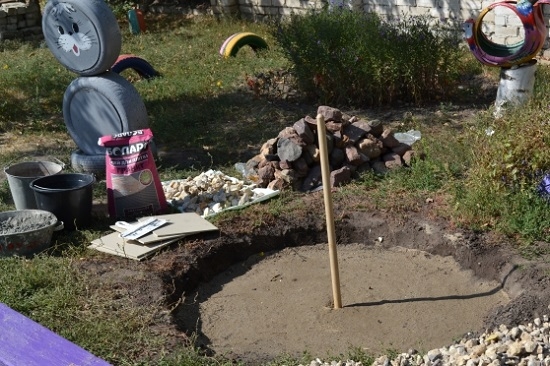
- Then we will fill the pit with crushed stone. Let's distribute it evenly. You can even use screening.
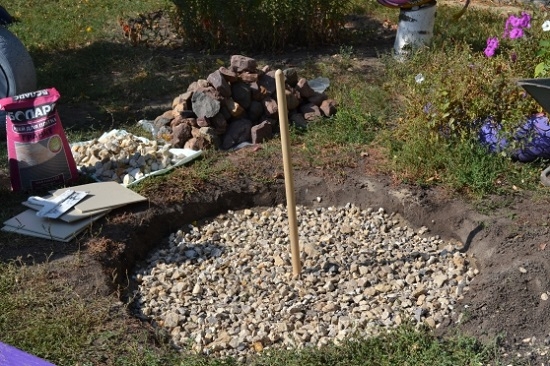
- Now we need to find a professional builder who will prepare the cement mortar and make the screed.
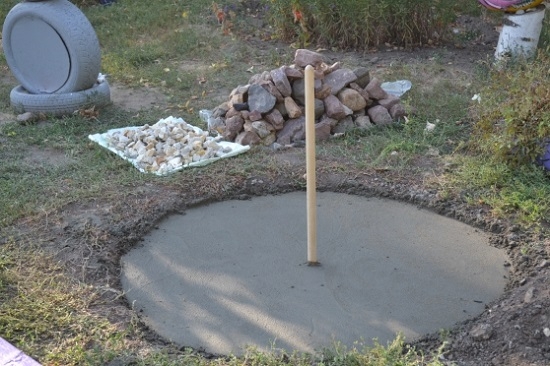
- We will not be able to carry out further actions until the solution has completely hardened, so we have an unplanned day off.
- It's time to install tiles using tile adhesive; it is advisable to choose the outdoor option.
- If you have skilled tile layers in your group, it is better to keep the circle shape. And if not, a square will do.
- Let's immediately paint the gnomon with bright color paint. We need a coating for outdoor use.
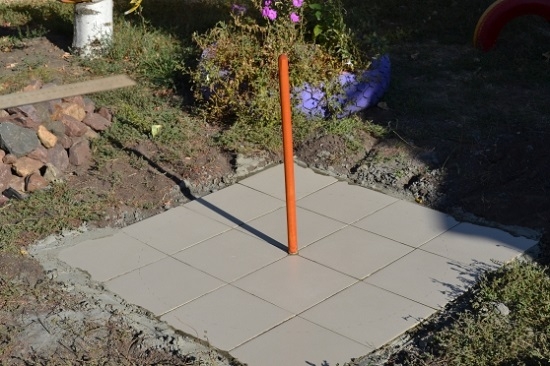
- To ensure everything is perfect, rub the tile seams with the remaining glue.
- We measure the circle, the center is our gnomon.
- Lay out crushed stone or pebbles in a circle and secure it with glue.
- We perform these actions only after the tile adhesive has completely hardened.
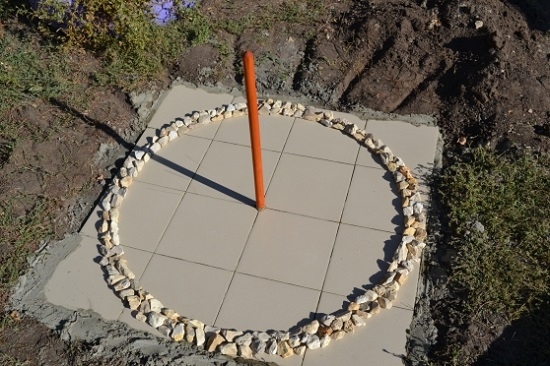
- But now we will have to work hard and work as an observer. On a clear sunny day, we will go to our clock every hour and make the marks indicated by the gnomon.
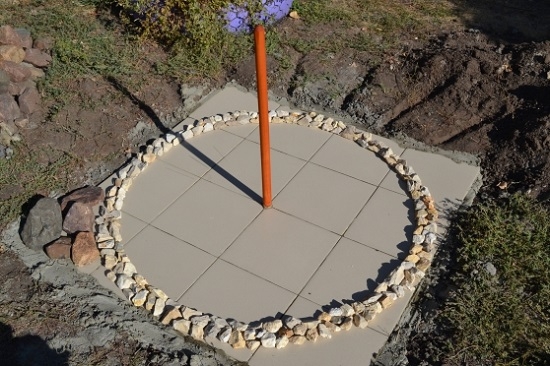
- We can continue to decorate the clock around it and lay out decorative stone.

- To ensure that the decorative stone holds firmly and the children cannot pull it apart, let's fix it with a cement solution.
- We will paint the inside of the dial with golden paint.
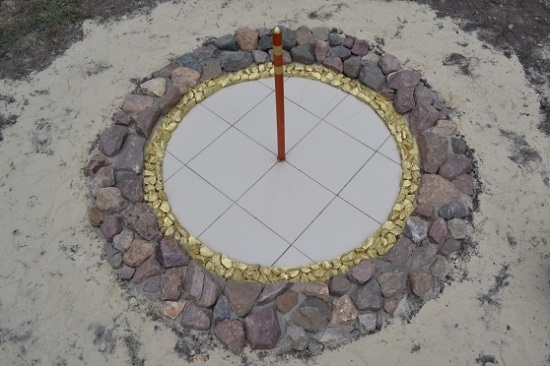
- We will paint the outside of the clock with ship's paint or varnish.
![]()
- Let's take pieces of linoleum and cut out numbers from them.
- You can draw Arabic or Roman numerals by hand. To make it look beautiful, use templates.
- Let's glue our numbers onto the dial.
- Now the watch is ready. The kids will rejoice looking at such a miracle of nature.
It might be useful to read:
- Beaver catching at different times of the year;
- Emergency assistance for drowning;
- How to behave in a thunderstorm. Safety regulations;
- How to make a fish dryer with your own hands;
- Medical glue "bf";
- The first sensible review of dry rations from a woman;
- The best steel for a hunting knife;
- Do-it-yourself sundial: decorate the dacha and kindergarten playground;